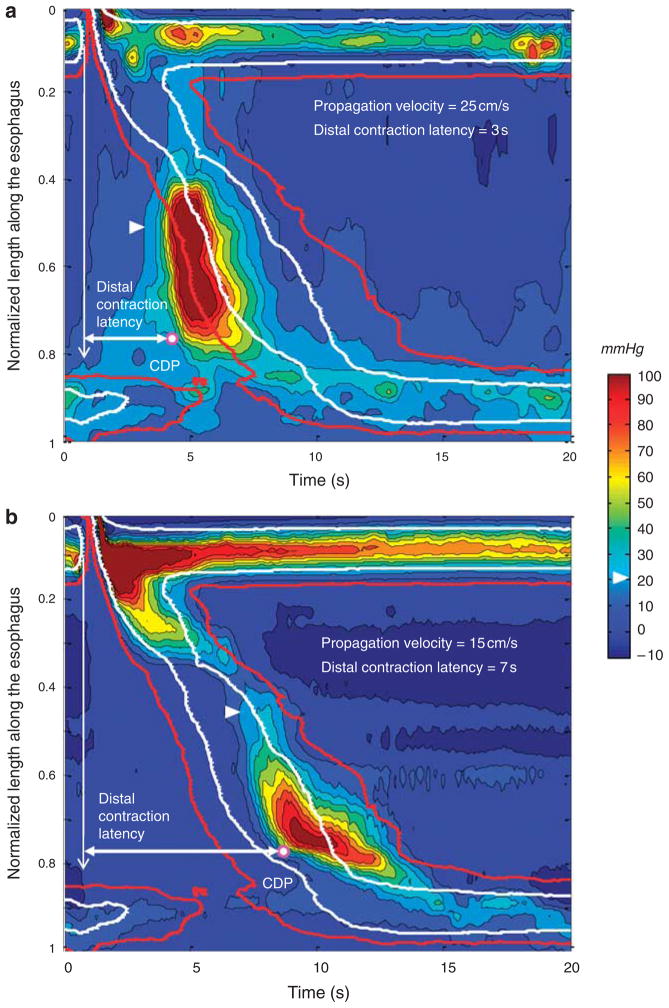Figure 6.
Examples of composite swallows in two subjects with rapid propagation velocity. The arrowhead delineates the 20 mm Hg isobaric contour. White and red isobaric contours correspond to the median and the 95th percentile for the 20 mm Hg isobaric contour of the 75-control subject composite swallow, respectively. The contractile deceleration point (CDP) is marked by the white dot. The vertical arrow indicates the onset of upper esophageal sphincter (UES) relaxation and the horizontal arrow the distal contraction latency. (a) The 8-swallow composite of a 79-year-old man with heartburn and dysphagia. The lower esophageal sphincter (LES) relaxation is normal (mean integrated relaxation pressure (IRP) = 8.8 mm Hg). The distal contraction latency is clearly short as evident by its preceding the overlaid red isobaric contour. This pattern is consistent with a diffuse esophageal spasm. (b) The 8-swallow composite of a 21-year-old female control subject without any esophageal symptoms. The LES relaxation is normal (mean IRP = 11.3 mm Hg). Despite rapid propagation velocity, the latency of the distal contraction is normal.

